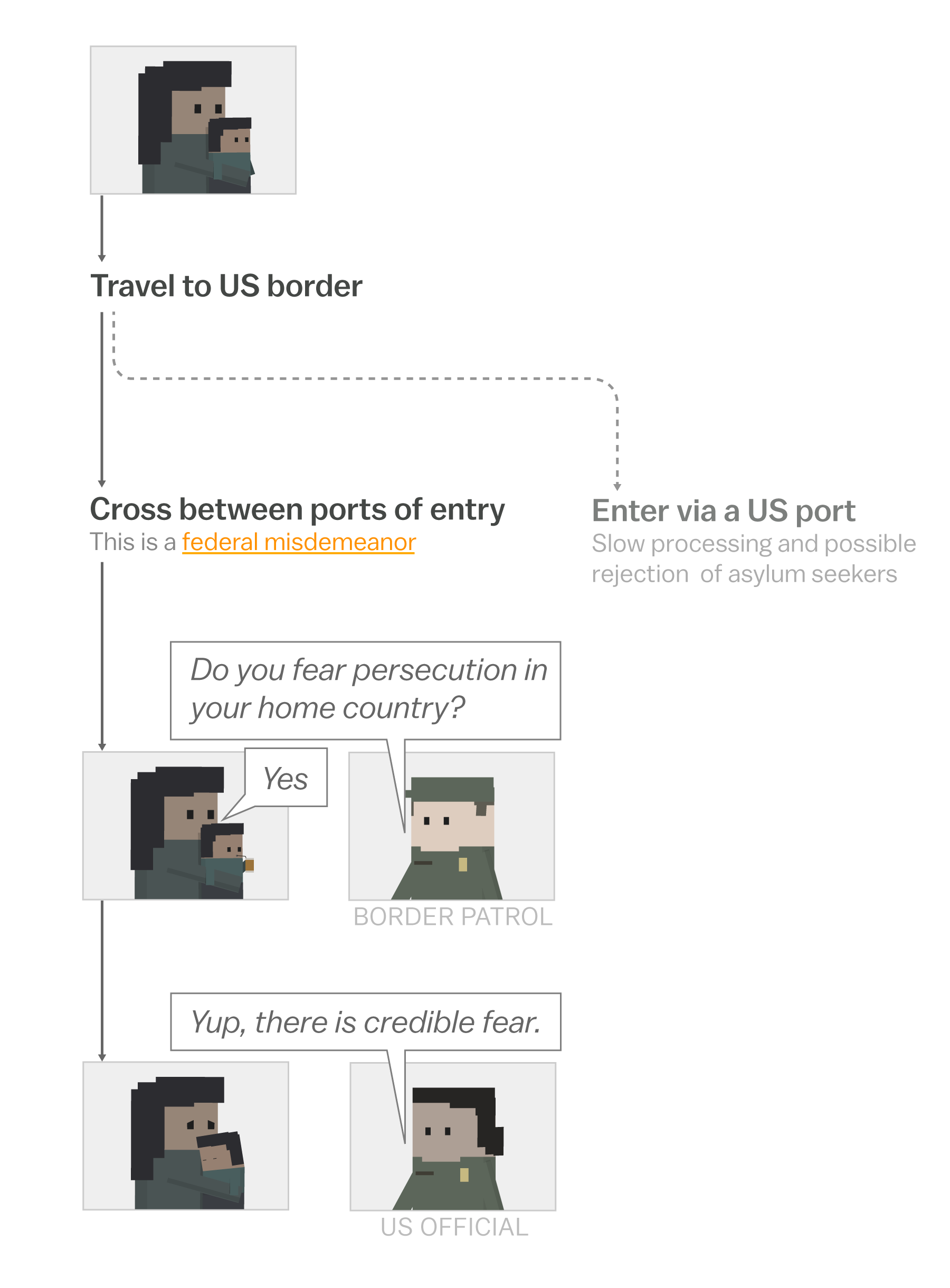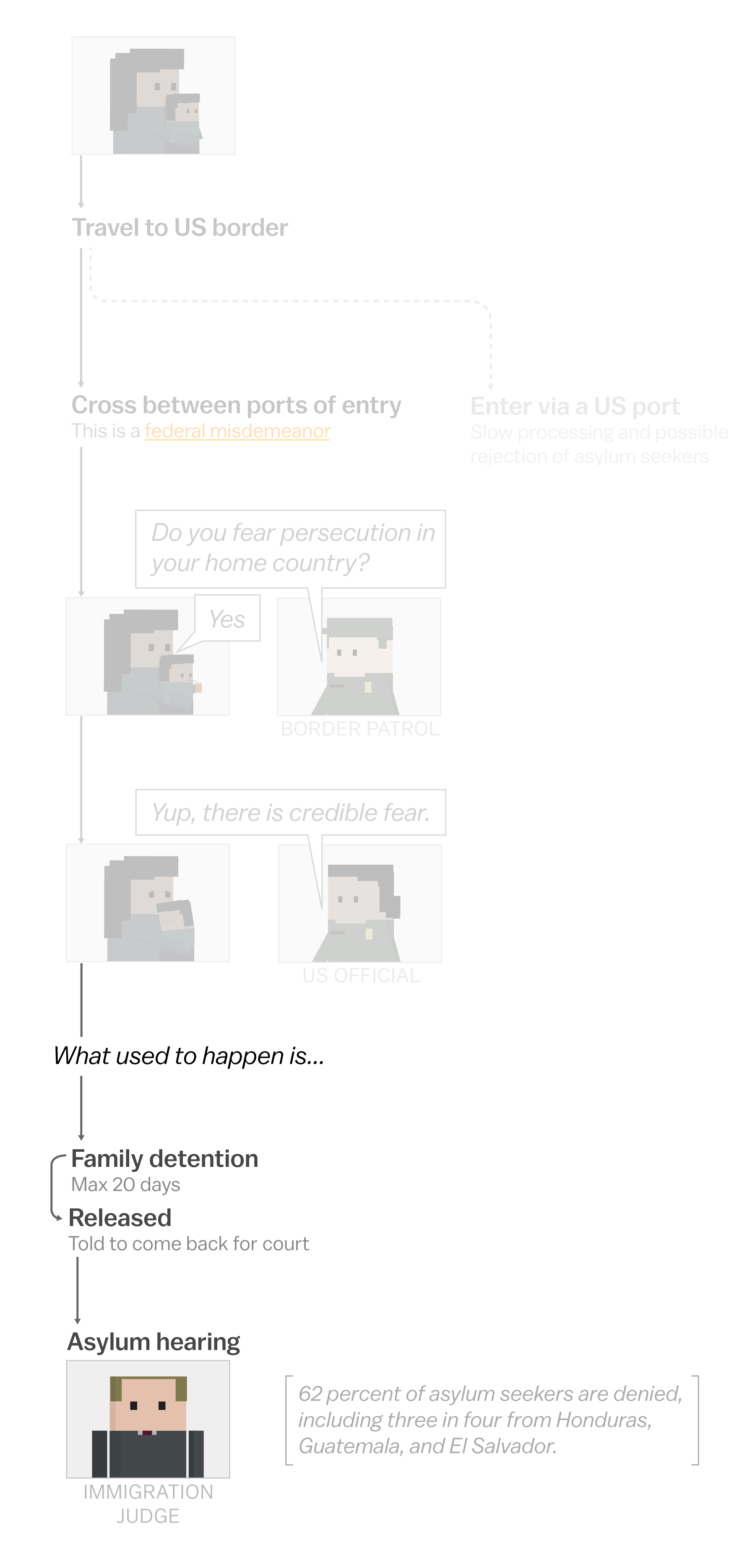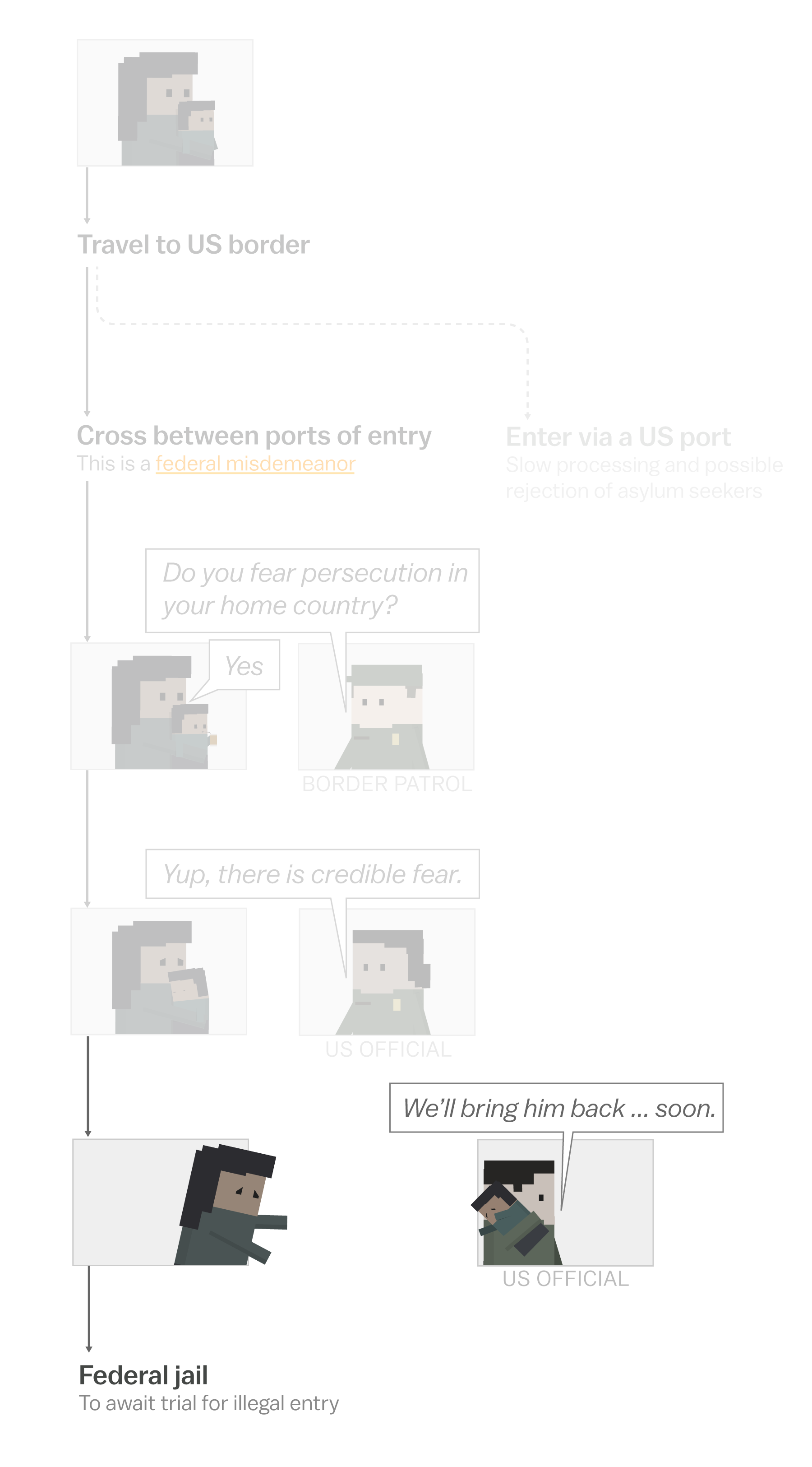Each day, dozens of immigrant families come to the US-Mexico border seeking asylum — and now the parents are being told that they’ve broken the law, are separated from their children, and are taken to jail.
The children, meanwhile, are swept into a completely different federal bureaucracy.
And there is no process to reunite the families.
Dara Lind has an excellent explainer that covers the various moving parts of the separation of migrant families at the border. But if you haven’t been following closely, this visual story should help you get a better understanding of how this process works — and how the Trump administration is justifying it.
1) The initial process for asylum seekers
Let’s say you and your child are from Honduras, among the world’s deadliest nations that aren’t at war.
From our partners:
Like thousands of other families, largely from Honduras, Guatemala, and El Salvador, you take the dangerous journey north to the US-Mexico border.
You could go to a US port of entry — like a border checkpoint — and claim asylum, which is legal. But you’ve heard that the ports of entry into the US can’t process asylum seekers quickly and that border officials sometimes refuse to accept asylum seekers.
So, like many other asylum seekers, you decide to cross between ports of entry.
This is a federal misdemeanor.
And upon crossing the border, you are apprehended by Border Patrol.
The Border Patrol agent asks if you fear persecution in your home country. You say yes. An official then interviews you to make sure you have “credible fear” if sent back. This is to determine whether you are eligible to go in front of a judge and seek asylum. (About three in four people are deemed credible.)
At that point, the US has to keep asylum seekers because federal and international law says they can’t deport people back to places where they would face danger.
2a) Before this policy, families would first await asylum proceedings together
Before this Trump policy, those who were deemed to have credible fear would be put on a track to see an immigration judge, who would determine whether to grant asylum.
Some families were released and told to come back for a court date. Others were kept waiting in detention for up to 20 days and, if they hadn’t seen a judge by then, were released and told to return for a court date at some point in the future.
This is what immigration hawks derisively refer to as “catch and release,” something President Trump has vowed to end. In fiscal year 2017, the US issued 100,000 formal orders of deportation for all unauthorized immigrants. But just 60 percent of people showed up to court to hear this decision; the rest never appeared in front of the judge.
2b) Now some parents are being prosecuted for the illegal crossing — and separated from their kids
The Trump administration has taken a new approach.
Instead of first figuring out whether you should be granted asylum, the administration’s first step is now to deal with the other matter at hand: the misdemeanor for illegal entry.
Upon being apprehended by Border Patrol, you are set aside to be detained by US Marshals and sent to a federal jail to await trial.
This is where the separation happens — because a child can’t go with you to federal jail, he is taken from you.
Your child is now placed under the supervision of the Department of Health and Human Services, which sends him to temporary housing. This could be foster care, or it could be one of the detention centers where children are kept in what are essentially cages. In the meantime, HHS looks for a relative in the US who can take him in. Sometimes this takes weeks.
3) After serving time in jail, parents try to reunite with their kids. But there is no process to make this happen.
And it could take time to see a judge because immigration courts are backlogged — and this would get worse since the Trump administration wants to prosecute all border crossers.
The maximum sentence for a first-time illegal entry conviction is six months. Usually judges just sentence immigrants to “time served.”
Once you’ve been convicted, you are returned to the custody of immigration officials to go through deportation proceedings. This is when you can theoretically reunite with your child at a civil detention center while you pursue your asylum case, according to the administration.
But that’s not what’s happening. The US has no procedure to reunite parents with children. In the detention centers, immigrants don’t have phone access. It’s taken some parents months to track down their kids. In addition, some parents are being deported without their children, and advocates say some small children are being deported without their parents.
How the Trump administration is justifying its policy
The Trump administration can’t seem to get its story straight on why it has implemented this “zero tolerance” policy.
As my colleague Matthew Yglesias put it, “President Donald Trump’s White House has now offered three conflicting reasons for why it is breaking up families seeking asylum at the border. It’s a deterrent. It’s Democrats’ fault. It’s not even a real policy at all.”
Immigration experts say family separation is clearly being used as a deterrent.
It’s a strategy to make the process more painful for families in hopes of making sure asylum seekers don’t set even one foot in the US, since international laws say they then can’t be turned away.
The reality is that this strategy involves taking children away from their parents without a process for reuniting them.
This feature is written by Alvin Chang and originally appeared in Vox.





















